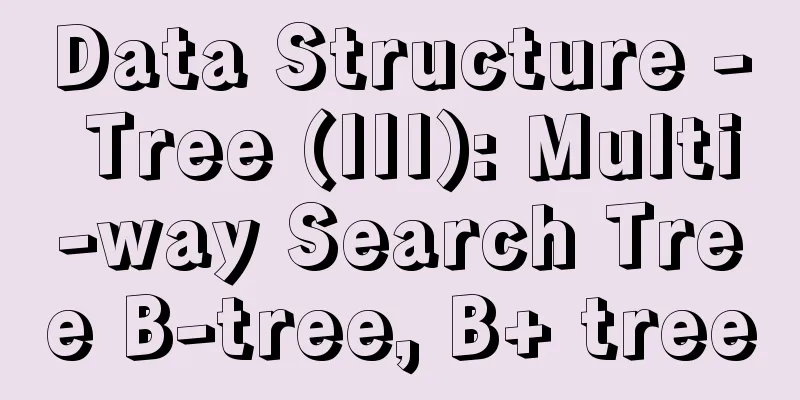Data Structure - Tree (III): Multi-way Search Tree B-tree, B+ tree

|
Multi-way search tree
B-Tree B-tree is an M-way search tree. B-tree is mainly used to solve the imbalance of M-way search tree which causes the tree height to become higher, just like the performance problem caused by the degeneration of binary tree into linked list. The B-tree ensures the balance of the M-way search tree by controlling and adjusting the nodes in each layer, such as node separation, node merging, and splitting the parent node upward to add a new layer when a layer is full. The specific rules are as follows:
Size options: M and L
Disk block size and M calculation
Number of leaf node data items L
B+ Tree The structure of the B+ tree is basically the same as that of the B tree. The only difference is that the leaf nodes of the B+ tree are connected by pointers to form a linked list, so it is easy to traverse all the leaf nodes, that is, to obtain all or all data items in a certain range of the search keyword. MySQL's InnoDB storage engine uses B+ tree as the index implementation. The above is the detailed integration of multi-way search tree B-tree and B+ tree introduced by the editor. I hope it will be helpful to everyone. If you have any questions, please leave me a message and the editor will reply to you in time. I would also like to thank everyone for their support of the 123WORDPRESS.COM website! You may also be interested in:
|
<<: Ubuntu 18.04 installs pyenv, pyenv-virtualenv, virtualenv, Numpy, SciPy, Pillow, Matplotlib
>>: The solution to the page not refreshing after the route changes after react jumps
Recommend
Solution for mobile browsers not supporting position: fix
The specific method is as follows: CSS Code Copy ...
Node.js returns different data according to different request paths.
Table of contents 1. Learn to return different da...
HTML page adaptive width table
In the pages of WEB applications, tables are ofte...
Detailed steps for embedding Baidu Maps in web pages and using Baidu Maps API to customize maps
Insert Baidu Map into the web page If you want to...
Nginx try_files directive usage examples
Nginx's configuration syntax is flexible and ...
Summary of Mysql-connector-java driver version issues
Mysql-connector-java driver version problem Since...
A brief analysis of the event delegation mechanism and deep and shallow copying in JavaScript
Table of contents 1. Event delegation Event Bubbl...
Win10 + Ubuntu 16.04 dual system perfect installation tutorial [detailed]
Be sure to remember to back up your data, it is p...
Detailed explanation of MySQL master-slave database construction method
This article describes how to build a MySQL maste...
JavaScript implements asynchronous acquisition of form data
This article example shares the specific code for...
Use of MySQL trigger
Table of contents 1. Trigger Introduction 1. What...
jQuery implements nested tab function
This article example shares the specific code of ...
Explain TypeScript enumeration types in detail
Table of contents 1. Digital Enumeration 2. Strin...
A brief summary of basic web page performance optimization rules
Some optimization rules for browser web pages Pag...
Use pure CSS to create a pulsating loader effect source code
Effect Preview Press the "Click to Preview&q...










